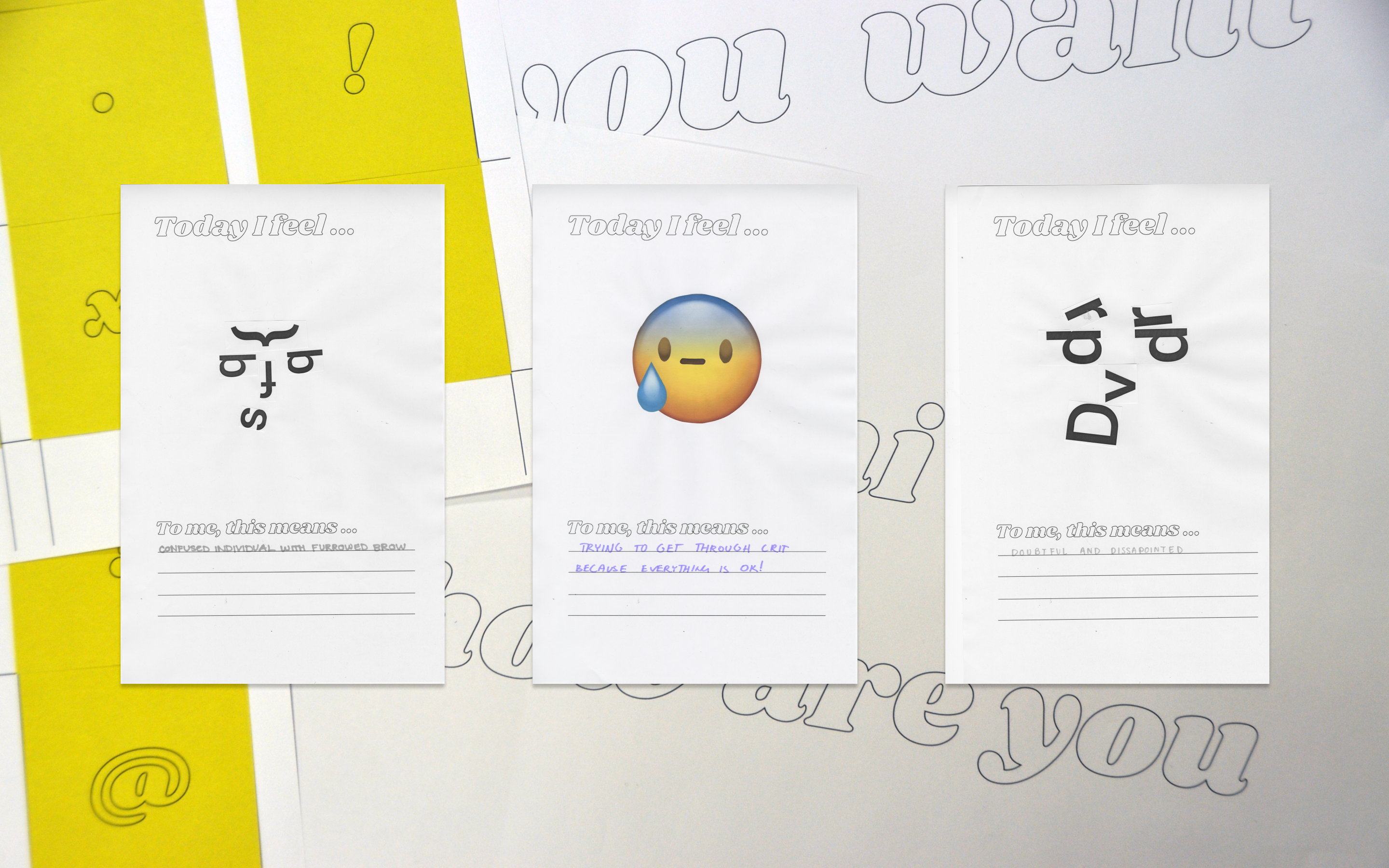
hi how r u: An exploration into digital expression
Spring 2019 - design ethnography, print designAn exploration into how communication has evolved within the constraints of modern messaging platforms, and how it can be furthered without them. This project was featured as part of the EPIC 2019 ethnography conference.
Overview
In the absence of physical cues like tone of voice and facial expressions, young people, particularly Gen Z are increasingly using the materials provided for them for digital communication in unexpected or unintended ways to allow for more nuanced online communication. This is a new form of digital placemaking, as more and more our digital relationships and interactions hold a weight that rivals our physical ones. Through participatory research, this project explores how digital communication has evolved within the constraints of modern day messaging platforms, and how it can be furthered without them.
What is it actually?
I ran a series of workshops letting people play around with paper cut outs of digital tools like emoji components, symbols, and punctuation, to see what complex emotions and tones they could express on paper when not limited by the contraints of a text message.
I also made a little book
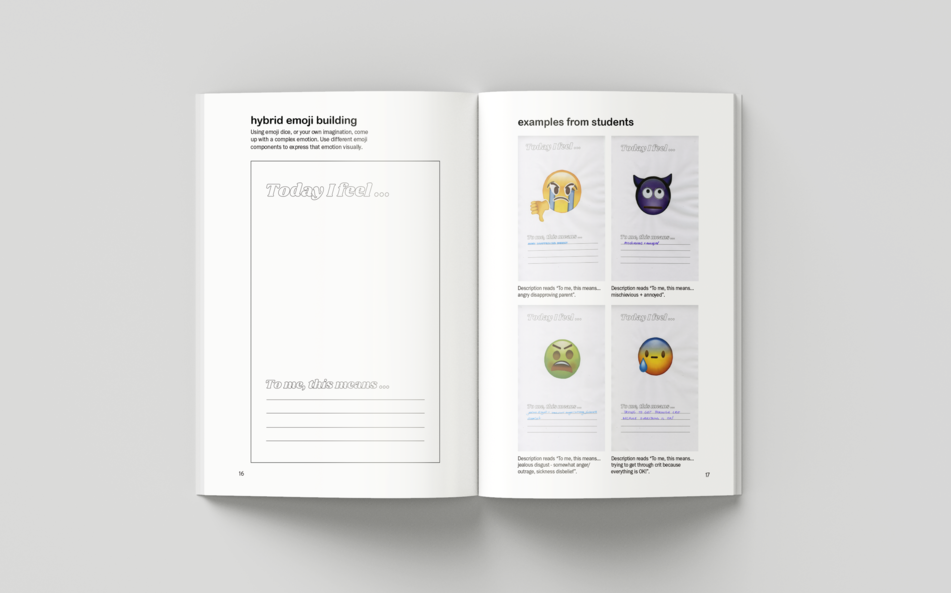
This work was accepted into the EPIC ethnography conference in 2019, where I was the only undergraduate student in the gallery section. I wanted to create a booklet to summarize the work, my findings, and the examples that had been created through participatory research. One day I will make a gif to show all the pages of the printed version, but until then, check it out online.
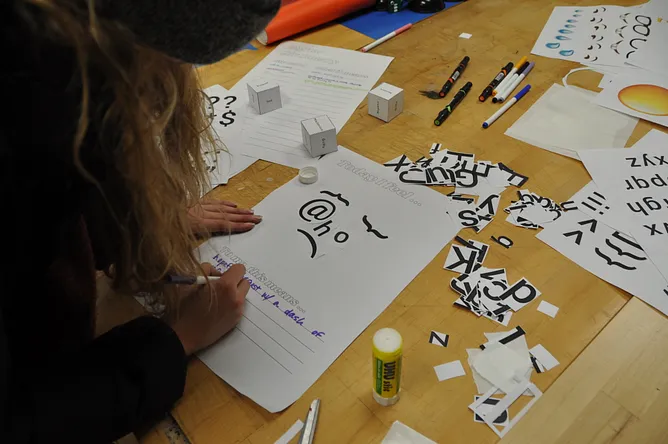
Insights from participatory research
- People (particularly young people) bend the rules of written language when communicating online to add nuance in a space where physical indicators like tone of voice and facial expression are absent. This can involve using punctuation in new ways, spelling words differently, using uppercase and lowercase letters in non traditional places, and using images, letters, emojis, and more to create hybrid emojis or reaction images that convey a hyper-specific emotion.
- Different digital communities use language slightly differently, with alterations to spelling, punctuation rules, emoji use, and the use of keywords.
- Linguistically these alterations by community can be compared to different dialects of the same language, as opposed to different languages entirely.
- The medium we use and the tools given to us influence the way we express ourselves. Interfaces for digital communication are constrained, and often more creative expression occurs in digital environments with fewer constraints.
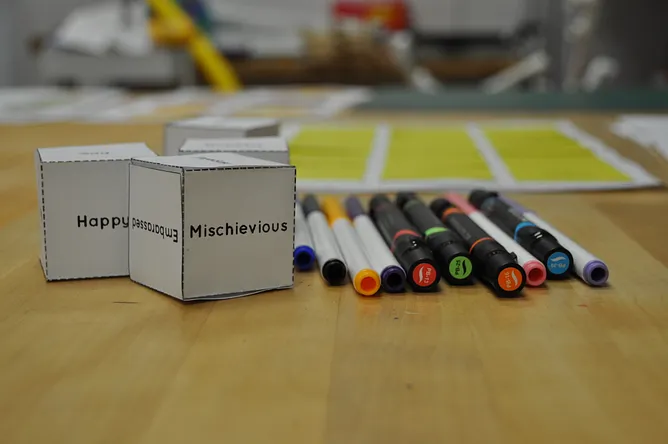
Workshop Components
- Roll two emotion dice to come up with a complex emotion. Create an emoticon that conveys that emotion using QWERTY keyboard elements.
- Using the same emotion from the first activity, create an emoticon that conveys that emotion using IOS emoji components.
- Change the tone of basic phrases using punctuation post-it notes.
- Contribute to the Digital Dictionary by writing down all the words you might text to your friends, but probably don’t say out loud, and definitely aren’t in the dictionary.
Some of the results for activities 1-2

Activity 4
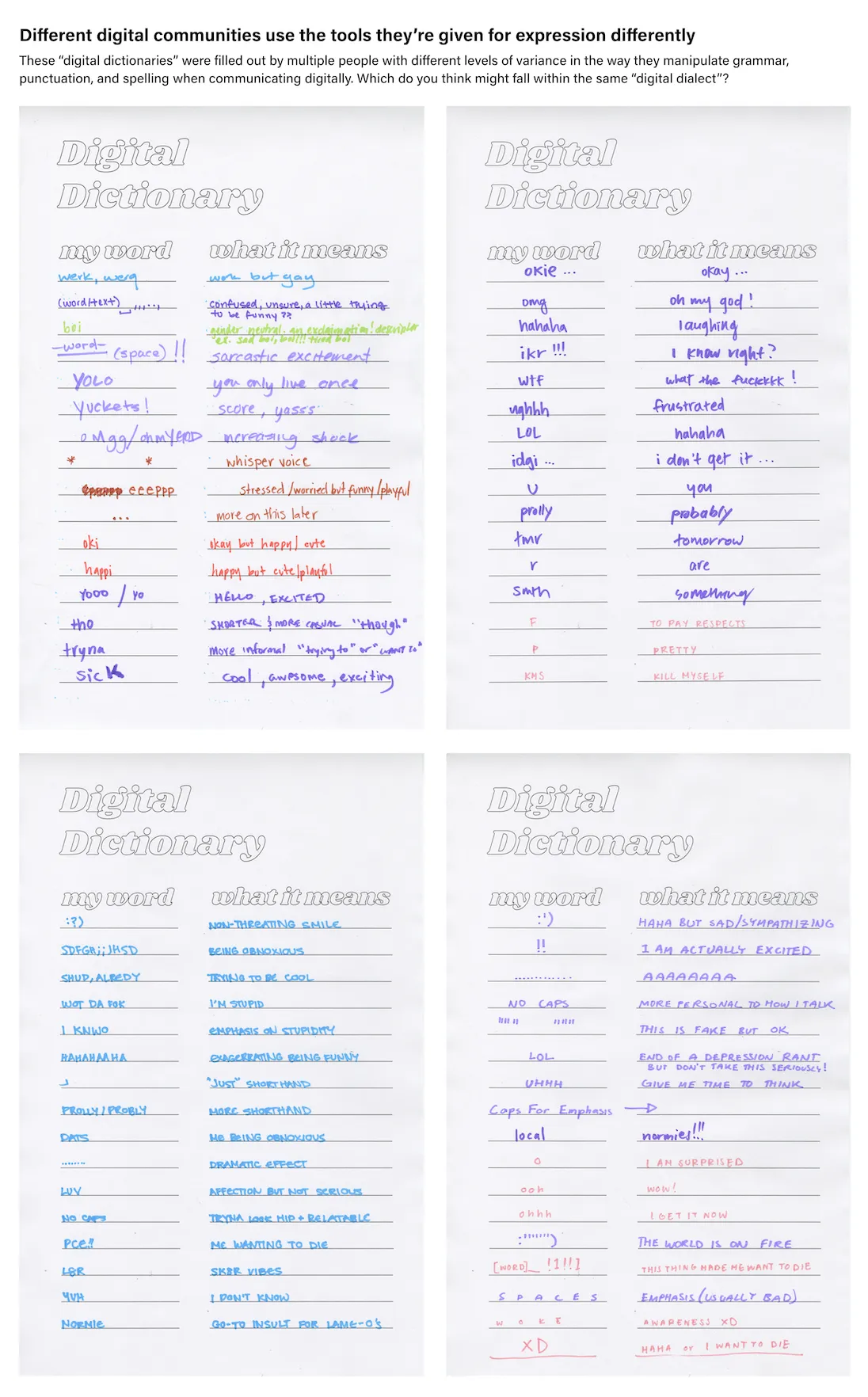
You can also check out some of my process on Medium.